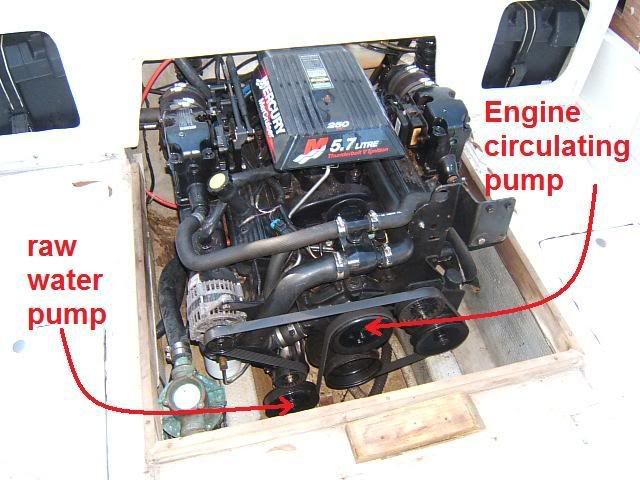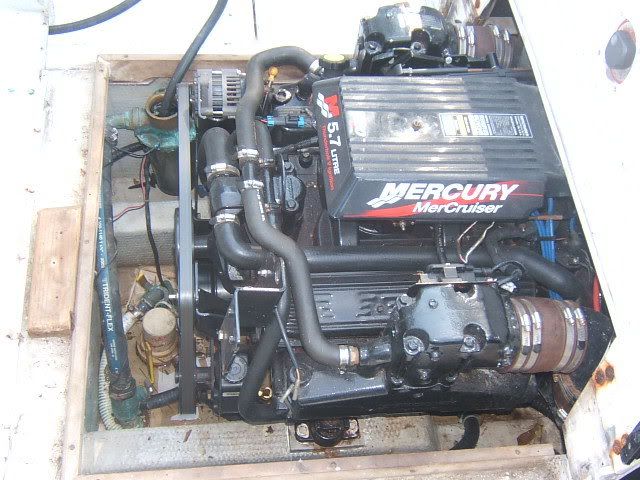Alright Gents, some updates here:
Did the following:
1. Completely drained coolant as per mercruiser manual
2. Removed heat exchanger took to rad shop and pressure tested, cleaned- all was fine.
3. Removed thermostat and replaced (was a 140 degree thermostat, replaced with a 160 as per mercruiser manual)
4. Bypassed cuddy cabin heater by running a 1 foot hose from water pump to thermostat
5. Reassembled everything, and filled coolant back up. There is no bleeding valve on this engine setup, so I followed steps in the manual which essentially was to:
a. fill to 1" below heat exchanger neck, start engine and run at 2000RPM for 10 minutes adding coolant as required to maintain 1" below neck. (didn't need to add much)
b. fill heat exchanger to bottom of neck.
c. install heat exchanger cap
d. fill coolant reservoir to full mark
After having done all of this, I took the boat out for a run to see how would do. It didn't take long before I started to see the heat exchanger pushing bubbly/frothy coolant into the overflow reservoir, and it eventually filled up and began to overflow into the bilge, here is a video (flows stronger at times but to give you an idea):
https://drive.google.com/file/d/0B1Q9WJpTJdJlV0tnR3p4R2hBa00/view?usp=sharing
I am not sure what to think here, I was speaking to a mechanic who was down at my marina and he mentioned that there is likely still some air in the system based on how I "burped" it. He thought that it could simply be air pockets in the cooling system which expands and pushes the coolant into the overflow reservoir. He suggested that I find a better way to purge the system of air, and even suggested I install a small bleeder valve on the thermostat housing. Not sure what to think of his recommendations, he was insistent that it couldn't be a head gasket, especially after learning I did the block test and that there is no contamination in the oil.
Any suggestions? I guess it is probably time to pull out the boat and do a compression and leak down test.......





















